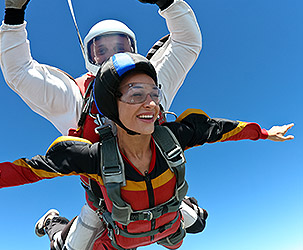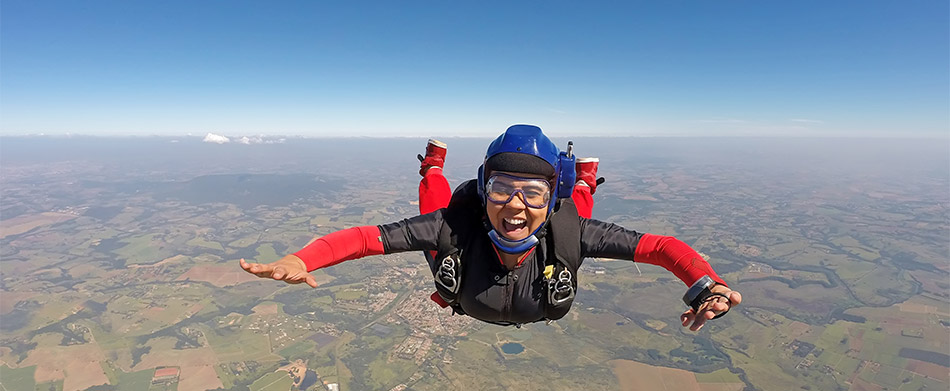AFF (Accelerated Freefall) is a training method used to teach new skydivers how to jump from an aircraft and safely perform freefall maneuvers before deploying their own parachutes.
Here’s how the AFF training process generally works:

Ground School
Before making any jumps, participants attend a comprehensive ground school session with us. In this session, they learn about the equipment, safety procedures, body positioning, parachute deployment, emergency procedures, and other essential information.

First Jump
In AFF, the first jump usually takes place from a significant altitude (often around 10,000 to 12,000 feet or higher). The student is accompanied by two of our highly trained instructors who hold onto the student’s harness during freefall to provide stability and guidance.

Freefall Maneuvers
During the first jump, the student experiences a controlled freefall. Our instructors help the student practice stability, altitude awareness, and basic body movements. The student’s primary goal is to demonstrate the ability to maintain a stable body position.

Parachute Deployment:
At a predetermined altitude, the student deploys their own parachute. If the student fails to do so within a safe altitude range, one of our instructors will assist in deploying the parachute.

Canopy Flight and Landing
After deploying the parachute, the student learns to control and steer the canopy (parachute) to a safe and controlled landing.

Progressive Jumps
Subsequent jumps gradually introduce more complex maneuvers and skills as the student gains confidence and proficiency. Eventually, students perform jumps with only one of our instructors, and eventually without an instructor once they demonstrate sufficient skill.

AFF is designed to provide a more immersive and accelerated learning experience compared to traditional static-line progression. It allows students to experience the sensation of freefall and control their body positions earlier in the training process. However, due to the greater complexity and the need for more instructor involvement, it often comes with a higher cost than other training methods.